 And finally, in the thrilling(!) conclusion, I present The Metal Pigeon’s Best Albums of 2013, the second and final part of my overall best of the year feature (click here for Part One: The Songs). I listened to more new metal releases this year than any other, something I intended to do after missing the boat on so many excellent albums from the past two years until well after their release dates. The resulting list is as always what I consider to be the ten albums released this year that I enjoyed the most. I only ever do ten because it forces me to be critical, selective, and honest with myself. It also keeps me mindful of my listening habits and preferences throughout the year. After all whats a better gauge for how much you enjoyed an album than taking into account the number of times you’ve actually listened to it? And yeah, I do look at my iTunes stats to spot check myself just for kicks, but I really don’t have to —- I’m proud of what I enjoy and will gladly own up to any of it. Its been another great year for metal —- here’s what I thought made it so:
And finally, in the thrilling(!) conclusion, I present The Metal Pigeon’s Best Albums of 2013, the second and final part of my overall best of the year feature (click here for Part One: The Songs). I listened to more new metal releases this year than any other, something I intended to do after missing the boat on so many excellent albums from the past two years until well after their release dates. The resulting list is as always what I consider to be the ten albums released this year that I enjoyed the most. I only ever do ten because it forces me to be critical, selective, and honest with myself. It also keeps me mindful of my listening habits and preferences throughout the year. After all whats a better gauge for how much you enjoyed an album than taking into account the number of times you’ve actually listened to it? And yeah, I do look at my iTunes stats to spot check myself just for kicks, but I really don’t have to —- I’m proud of what I enjoy and will gladly own up to any of it. Its been another great year for metal —- here’s what I thought made it so:

The Metal Pigeon’s Best Albums of 2013:
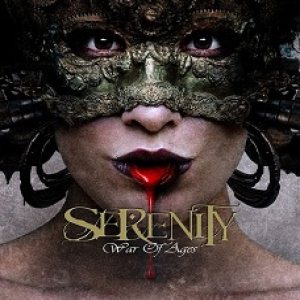 1. Serenity – War of Ages:
1. Serenity – War of Ages:
I know what you’re thinking. A prog-power metal album at the number one spot?! Wow, big surprise Pigeon! Fair enough, and your sarcasm is noted. But here’s the thing, my rule for these types of lists is that they have to be founded on the unflinching honesty of the present moment, as well as some incontrovertible truth, and so here’s the deal: This was my most listened to album of 2013—- far, far above other new releases, as well as any older records. War of Ages strikes me right in my musical heart, a record that encompasses the elements of what I love most about music across all genres. It has gorgeous melodies, smart songwriting, complex arrangements, and vocals that ring and soar. As a metal album, there’s heft and crunch provided by Thomas Buchberger’s less-is-more riff barrage, and the light symphonic arrangements that encircle everything else provide a sense of scale, tension, and drama.
Power metal has a generally accepted set of definitions, or aesthetic choices that collectively are its auditory makeup —- and ultimately that’s led to a certain amount of stagnation genre-wide over the years. But within the last decade there have emerged a small movement of artists that are trying to sidestep the traps that have developed from a result of time worn stylistic elements being overused to point of cliche. I believe Serenity are one of these select few that are knowingly aware of not only their strengths, but of what they need to do to sidestep cliches —- and its all reflected in their lean, refined approach to songwriting. They’ve had a core of songwriters in guitarist Thomas Buchberger and vocalist Georg Neuhauser that for three albums now have been making a run at equaling the near mythic legacy of Kamelot’s Youngblood/Khan era. But Serenity take chances and allow their newest member, co-vocalist Clementine Delauney to contribute to their songwriting process right away —- particularly in that she pens over half of the lyrics on War of Ages. Serenity have been on the cusp of challenging Kamelot’s claim to having the best lyrics in the genre for awhile now, and I think that with Delauney’s help they’re getting stronger and on a track to clear that hurdle a few albums from now.
In my best songs of 2013 list, I pointed out the album opener “Wings of Madness” as a particularly glorious highlight among many on this set, but the band really hits their stride in the second half of the album with a continuous streak of wildly diverse gems. Beginning with the quasi-ballad “Symphony of the Quiet”, where Neuhauser is able to flex his vocal dexterity over a moody piano bed and pronounced strings, almost Queen-like in its grandiose build up. It comes as a sharp contrast when the hard rock of “Tannenberg” kicks in, particularly in it’s strutting chorus where Delauney joins Neuhauser in a lead vocal duet —- her lilting vocals echoing his a split second behind. A lesser band wouldn’t be able to deliver such an upbeat, even fun sounding moment with nearly as much conviction. Ditto for the “Legacy of Tudors”, where the band really lets loose with an unexpected a capella intro, followed by a classically infused chorus where the vocal melodies are seemingly set to a waltz. On the closer, “Royal Pain”, Delauney takes another star turn with her emotionally shimmering delivery in the refrain —- perhaps the best moment by any female vocalist in metal this year.
Yes, I have grown up with European/American power metal as a part of my worldview of what metal can sound like. My appreciation for it sits alongside my love for death and black metal (check the rest of this list for proof). No, you don’t need to own a shiny, frilly-sleeved puffy shirt to be a fan of this music, or fall into some cliched stereotype that is so often thrown at those who enjoy power metal (nerd, basement dweller, etc, etc). All you need is an ability to appreciate music that is able to take you away from the often mundane realities of the daily grind, to remove yourself from the sheer staggering volume of irony, sarcasm, and self-awareness that engulfs society. Its the same reason you watch Game of Thrones and can’t explain why you love it so much: Escapism is something we all need and at times don’t realize how little of it we actually get. Serenity is a band made up of individuals that wake up each day and deal with the same amount of tedious crap that we all do; but when they get together and make music, they create a sound that seems like its coming from the pages of a book, of a world that we wish we could touch.
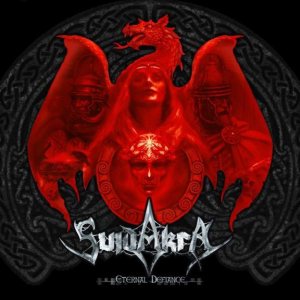 2. Suidakra – Eternal Defiance:
2. Suidakra – Eternal Defiance:
Germany’s Suidakra have a few important characteristics shared by many truly great bands: They aren’t easily categorized, and they don’t sound like anyone else. They’ve been perfecting a marriage of melo-death and folk metal for a long time now, and while that may not seem particularly distinctive on paper, its the way they’ve interpreted those sounds into something truly original that sets them apart. For starters they have nothing in common with Gothenburg melo-death or its stylistic traditions, and even more importantly they avoid the now cliche and trite “folk” sounds associated with Korpiklaani, Finntroll, Alestorm, and any other band of that ilk. And having seen what that genre turned into… it’s a smart move (before I get hate for that, I just saw Finntroll live the other week, and my concert enthusiasm plummeted when I saw them come out on stage dressed as elves, pointy ears and all).
I’d argue that their sound has more in common with fellow countrymen Blind Guardian than anyone else —- powerful and unafraid of being bombastic, as well as willing to indulge in pure balladry without a trace of self consciousness. This album is full of inspired work that exemplifies both traits: Take the militant headbanging stomp of “March of Conquest”, where lead vocalist Arkadius’ grim, harsh delivery contrasts with the clean female singing of Tina Stabel. Its one of the album’s catchiest moments, built around a folk inspired melody that is dressed up in brutal guitar riffs, juxtaposed by a chorus with a bagpipe arrangement that doesn’t overpower everything else. Stabel is a distinctive voice among female metal singers —- as opposed to being lithe and ethereal, her vocals are raspier and filled with what I can only describe as a metal attitude. And what I love in particular about Suidakra’s approach to songwriting is their embrace of diversity, such as the sudden mid-song drop in “Dragon’s Head” into near acoustic territory, replete with military snare drumming, distant orchestration, and possibly even a banjo being plucked!
Some may not enjoy the full on balladry of a song like “The Mindsong”, with its near maudlin lyrics about saucy, seductive Queens beckoning Roman rulers to come hither in their dreams but its a solidly crafted tune and I enjoy it for what it is. I have a high ballad tolerance remember? But those who didn’t enjoy that one will surely appreciate the rustic, elegantly understated “Damnatio Memoriae”, where Sebastian Hintz handles clean vocals with some of the best sung lyrics of the year: “Reflecting his desires / To roam the world / To travel from sky to sky / To make his mark in time”. I love that song and I really love the cover of “Mrs. McGrath” they decided to add on to the end of the digipak editions of the album. Yes its the traditional Irish ballad made popular recently by Bruce Springsteen, but Suidakra make it their own with a half acoustic, half metallic approach and unlike Springsteen, they deliver it with the original lyrics. Its almost swashbuckling with its organic instrumentation and an absolutely jaw dropping vocal by Stabel. I wish more metal bands would try their hand at unusual cover song choices like this from outside the instead of treating us to the umpteenth version of some metal classic.
![]() 3. Satyricon – Satyricon:
3. Satyricon – Satyricon:
I’ve been fiddling with the damn ordering of this list on and off for the past couple weeks now, and a short while ago this was a few spots further down, but as I’ve gone through re-listening to all the albums on this list I realized something about Satyricon’s self-titled “comeback” record: This might be the bravest album of 2013. Tagging a record with that kind of adjective is confusing so I’ll explain briefly: Satyricon went away four years ago promising to come back musically renewed, having felt that they had taken the Now, Diabolical/Age of Nero era sound as far as it could go. Well that was already a rather simplistic sound when compared to their earlier, more symphonically infused back catalog, as well as in relation to releases by their fellow popular black metal peers. So the natural way to leap into a new sound Satyricon was to plunge back into the past with all the orchestral dressing of classics like Nemesis Divina, right?
Well not according to Satyr, who decided that the way forward into new sonic territory was to examine the structure of black metal itself and poke holes in it. Unlike the recent trend of American bands to copy the French and infuse black metal with shoegaze (or is it really the other way around?), Satyr has created a collection of songs that are built on the concept of addition by subtraction. Gone are the buzzsaw like guitars of the past, the hyper aggressive riffs and vocals, as well as the direct, in-your-face songwriting approach. Satyricon’s new sound is best described as muted, sparse, even spacey. The guitars mostly play open chord sequences, and when the rare riff pops up, its markedly less aggressive sounding than what we’re accustomed to a black metal riff sounding like. These songs are mostly atmospheric in nature, with a sense of awareness regarding the spatial relationships of instruments —- such as little in the way of multi-tracking or layering for example. The theory I summed up in my original review of this album is that “This is the sound of black metal’s moods, tones, and temperament, but purposefully stripped of its surface aggression.” In all honesty I have to be in the right frame of mind to be receptive to this album in full, but when the mood does strike I’m consistently amazed at what the band has accomplished here. Its unlike any album I’ve ever heard, black metal, metal, or anything.
 4. Carcass – Surgical Steel:
4. Carcass – Surgical Steel:
You should all be aware of this album by now, and yes its worthy of all the hype and high placement on year end lists. This is one of those rare occasions where a reunion album actually manages to add to a legacy, not only by remaining true to the sounds of the most beloved era of the band’s history, but by delivering song really great songs that tower among Carcass’ best ever. I’m referring specifically to a handful of cuts here, such as “Cadaver Pouch Conveyor System”, “The Master Butcher’s Apron”, “The Granulating Dark Satanic Mills”, and of course the instant fan favorite “Captive Bolt Pistol”. If you haven’t heard the record by now (seriously?), imagine the melodicism of Heartwork with just a slightly crisper, more modern production. I wonder if the scattered naysayers of this record are more upset by that than anything. I had a hard time imagining that Carcass would come back sounding closer to their earlier Symphonies era. Maybe on the next record?
Anyway Bill Steer is the star here, flying all over the fretboard, turning in riffs and wild solos as only he can —- his sound is so identifiable its almost like a trademark at this point. Jeff Walker’s vocals don’t miss a step either, he sounds as vicious and snarling as ever… ageless I think I said when I reviewed this album upon release, listening to him alone you’d think this was recorded in the mid-nineties. New drummer Daniel Wilding actually manages to outdo Ken Owen, as crazy as that reads on paper. He’s inventive, has fills aplenty, and plays off Steer’s riffs in unexpected ways. I’d be remiss if I didn’t spend a few sentences gushing about the finest moment on the record, “316L Grade Surgical Steel”, which might be my all-time favorite Carcass song now. which is five minutes of metal perfection. My favorite moment comes towards the song’s end starting at 4:20 where Walker snarls out the catchiest, fiercest passage on the album. What an incredible album. Steel your heart!!!
 5. Falkenbach – Asa:
5. Falkenbach – Asa:
The biggest surprise of the year for me personally, Falkenbach’s Vratyas Vakyas delivers the best album of his now two decade spanning career. What makes it so is equal parts excellent songwriting and a new emphasis on a clear, crisp, vocals-up-front mix and production. This is the first Falkenbach record that sounds equally as good on my car stereo as it does on headphones, something that couldn’t be said about past records. And when it comes to songs, Vakyas provides an array of styles and tempos, all inventive and unique in their own right. There’s an almost old school sounding black metal track in “Wulfarweijd”, which has a rather catchy riff buried underneath suitably blackened vocals courtesy of longtime Falkenbach screamer Tyrann / Philip Breuer (news to me, I always thought Vakyas did the screams). On other more mid-tempo songs, like “Bluot Fuer Bluot”, and “Bronzen Embrace”, I’m almost getting a Moonsorrow meets Otyg vibe.
Then there’s the Ulver-ian half-acoustic, sitting around the fire hymns of “Eweroun”, and ““Mijn Laezt Wourd”, two absolute gems that sail along on the power of Vakyas’ best clean vocal performances to date. “Eweroun” made my best songs of 2013 list, but its companion song could just as easily have been in it’s place there. Both have stirring, majestic, almost spiritual melodies set against a backdrop of warm, fuzzy, hypnotic riffing and delicate acoustic guitar. I love stuff like this and really appreciate it when someone just “gets” how to do it so well. I like that Vakyas has stayed true to his vision and refused to veer off into the cartoonish direction a lot of folk metal has gone into —- he doesn’t need to. Much like Suidakra’s Arkadius, Vakyas is one of folk metal’s pioneers, and his music connects to our ideas and conceptions of nature, the earth, and existence. Its criminal that this record is going to be overlooked by so many.
 6. Orphaned Land – All Is One:
6. Orphaned Land – All Is One:
I doubt there is anyone who appreciated Orphaned Land’s All Is One album as much as I did. I wrote at length about my rather complex history with Orphaned Land earlier this year, and long story short I felt grateful to have another chance to really connect with the band that broadened my musical horizons well beyond metal. I’m aware that much of the band’s middle east following is due to their lyrical concepts and message of unification, peace, and brotherhood. I don’t have a strong opinion on that aspect of the band’s work as a distant American —- I think its a good thing in general of course, and I admire a metal band that dares to be purely positive without any trace of self consciousness, but my attraction to Orphaned Land has always been musical first and foremost. This is not a perfect album, (but then they’ve yet to realize one of those), it is however a really great one. I already gushed about the title track and “Brother” in my Best Songs of 2013 feature, so I’ll avoid repeating myself on both of them here. The rest of the album is just as interesting, filled with the kind of musically adventurous Oriental metal that this band has really pioneered.
Take the rich, cultural instrumentation and vocals in “Ya Benaye”, there is so much going on here musically that I couldn’t even begin to name all the instruments, I just know that its a beautiful, soulfully laid back moment of respite amidst an album full of drama, tension, and yeah, some fairly metallic riffs. Likewise in the instrumental “Freedom”, where the guitar vs oud interplay of Yossi Sassi and new guy Chen Balbus eventually turns into jaw-droppingly beautiful bouzouki outro (or hell maybe I got those instruments backwards, either way I want more of it). Speaking of guitars, those two guys turn in the best guitar dual guitar performance on any record released this year —- their ability to play off each other and complement one another is simply stunning, and a huge pull of this album’s appeal. Of course Kobi Farhi is his inimitable self here, delivering some fine vocals to some really excellent lyrics. And the decision to shell out for a full choir and string section was worth the additional expense, they lend a fullness to the sound that was lacking on past records. There’s so much to enjoy here, and the good news is that we’re promised a new studio record in a relatively short (for Orphaned Land standards) time frame —- I can’t wait.
 7. Rotting Christ – Kata Ton Daimona Eaytoy:
7. Rotting Christ – Kata Ton Daimona Eaytoy:
This is the most bizarre album on this list, I’m not even sure I did it justice in my original review for it earlier in the year. Rotting Christ is a band that I had callously written off many, many years ago for reasons I can’t remember. This album brought me back into the fold as a cemented fan, and its the sheer audacious sense of anything goes, unpredictable blend of what I guess are Greek folk music elements mixed with a unique vision of black metal. Song structures here are uncommonly strange, eschewing traditional verse/chorus structures in favor of Burzum-esque repetition, except that instead of aiming for the hypnotic riff sequencing, Rotting Christ favor a vibrant, shouted vocal chant style approach. There’s a high degree of melodicism going on here as well, guitars deliver ultra-melodic riffs and are often laced over an intense bed of furious percussion, often not matching tempos which creates a very unique effect upon your sensibilities as a listener.
Perhaps what makes Rotting Christ’s take on black metal sound so refreshing is their rejection of genre tropes, such as blurring blast beats, tremolo riffs, and aural density. In contrast, the songs on this album have ample space to breath, to sound muscular, and to have sonic identities of their own. Take “Cine iubeşte şi lasă”, where Gypsy-like female vocals usher the song along over slicing guitar riffs and a chanting choir bed. Then there’s the Therion meets Rammestein march of “Iwa Voodoo”, where melodic guitar figures sit between brutal, gutturally chanted male choirs. I wrote in my review of this album that I found it fun to listen to, and I still feel that way. Its one of the catchiest records of the year for metal of all genres, and I can’t tell whether its solely by design or it just tends to turn out that way. Next to Therion, I can’t think of a band that’s come from the ranks of extreme metal that composes music with such interesting song structures. For all it’s accessibility, I have a hard time explaining this album in words —- just go listen to it yourself and you’ll understand why.
 8. In Solitude – Sister:
8. In Solitude – Sister:
I imagine that by now you’ve seen this record pop up on many year end metal lists, and have either scoffed or wondered what the big deal is. I got to see these guys alongside Tribulation as openers for Watain a few months ago, and they were an impressive live band, so much so that I was moved enough to check this album out as well as revisit their past two records. I found that Sister has held my attention far more than their previous more straight up retro-metal records could. I do hate using that term to describe anything I’m listening to, but really In Solitude was doing little more than Mercyful Fate worship back then. They must’ve gotten tired of hearing that, because they purposefully distort their sound here with a substantial infusion of goth-rock and post-punk aural aesthetic. Vocalist Pelle Ahman even adopts a looser, more punk-inflected lead vocal delivery to match their new musical approach. If all this strikes you as purposeful affectation to be suspicious of, I suppose I can understand that sentiment but then I’d pose the question of what’s a band that is accused of simply mimicking the past supposed to do other than try to redefine their own sound?
All questions of motive and intent aside, In Solitude know how to write some really fantastic songs. A track like “Pallid Hands” hums along on the back of a guitar riff that reminds me of The Cult’s “Rain”, heck even Ahman’s vocals sometimes come off a bit Ian Astbury-ish. I love the inclusion of their cover of an obscure Swedish post-punk band called Cortex, with the rollicking, jaunty “Jesus I Betong” (yes that’s the title). On the propelling title track, Ahman’s vocal delivery rests a half beat behind the guitars, creating the effect of loose, wild rock n’ roll more than anything remotely metal, which is okay seeing as how the song is rather excellent. There are metallic elements mixed in throughout this record, but they’re more textures and retro metal stylistic nods than anything outright heavy in the way of riffs. I can’t help but find myself enjoying it all, though I have to be in the mindset to accept the fact that its far less sonically heavy than even the shiniest of power metal.
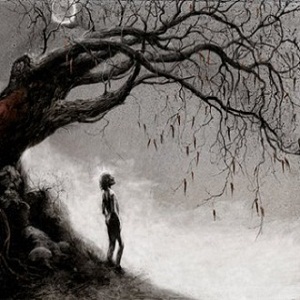 9. October Falls – The Plague of a Coming Age:
9. October Falls – The Plague of a Coming Age:
This album was a complete surprise, being one of the few promo copies I received and reviewed in the second edition of my Pigeon Post series. I really walked in blind, with no background on the band nor having heard any of their past work. To be honest, I still haven’t checked out the band’s back catalog because I’m so engrossed in this album, a strange blend of melodic death with blackened vocals, under a doomy, atmospheric blanket. Its almost a mix of Katatonia, Agalloch, and early era Opeth, minus a lot of the clean vocals (though there are some). As I was listening to it over these past few months I realized just how much these riffs bring to mind that classic Opeth sound of yore, and how much I’ve missed that. This isn’t to say that October Falls is simply ripping off Akerfeldt and company, but they both seem to tap into a shared vein of beautiful melancholia. When listened to on headphones outdoors in cold weather, this album is as good as hot coffee.
This is a full album experience —- one really needs to sit down, pay attention, and listen to this thing from start to finish. Skipping around tracks tends to ruin the atmosphere that is gradually building as the album progresses. But if I’m going to point out highlights you might want to check out, then start with the title track where Tomi Joutsen of Amorphis does guest clean vocals midway through under a wash of well done studio effects that have him sounding distant, almost faded out. Its a great moment, preceded by another stellar track in “Snakes of the Old World”, where gorgeous, swirling guitar melodies convey anguished emotion with as few notes as possible. I’m re-listening to this album as I type this, and every song has some awesome, isolated moment buried in the cocoon of each song —- they’re all worth writing about. Like I said, this album expects your full attention, and with the amount of thought and craft put into it, I think it deserves nothing less.
 10. Tribulation – The Formulas of Death:
10. Tribulation – The Formulas of Death:
I ended up being wrong in my early predictions for this record, which I’ve been listening to regularly since seeing them open for Watain a few months ago. I had figured that it would end up on a lot of the bigger best-of metal lists around the internet —- which it didn’t, turns out the band’s profile is lower than I thought. Secondly, I didn’t see myself having this album on my list at all, not that I didn’t enjoy it, but because it was taking me awhile to come around to acclimating to the band’s penchant for indulging in purely instrumental sections. But Tribulation really has great songwriting in spades here, particularly in the sense that they know and value a catchy riff or three, and are able to utilize them to create mesmerizing, hypnotic songs while using a variety of open chord flourishes as atmospheric soundscapes. Such as “Wanderer in the Outer Darkness” with its epic length and shifting riff sections which build up to unleash pure metal fury with one of the most killer riffs of the year around the 4:34 mark. Another highlight is the uptempo, aggressive “When the Sky is Black With Devils”, where a series of classic sounding riffs usher along the album’s most brutal vocal sections. “Randa” might be the best song here, a wild rocker that has the instrumental vibe of early, pre-Dickinson Maiden. And I’m slowly coming around to some of the aforementioned atmospheric, instrumental sections, which when planned out well add a lot to the creepy, near haunted vibe of the album. Give this one time and patience and it’ll reward you, its at the very least one of the most intriguing releases of the year.

 1. Therion – Les Fleurs Du Mal:
1. Therion – Les Fleurs Du Mal: 2. Pharaoh – Bury the Light:
2. Pharaoh – Bury the Light: 3. Be’lakor – Of Breath and Bone:
3. Be’lakor – Of Breath and Bone: 4. Sabaton – Carolus Rex:
4. Sabaton – Carolus Rex: 5. Barren Earth – The Devil’s Resolve:
5. Barren Earth – The Devil’s Resolve: 6. Anathema – Weather Systems:
6. Anathema – Weather Systems: 7. Kreator – Phantom Antichrist:
7. Kreator – Phantom Antichrist: 8. Dawnbringer – Into the Lair of the Sun God:
8. Dawnbringer – Into the Lair of the Sun God: 9. Enslaved – RIITIIR:
9. Enslaved – RIITIIR: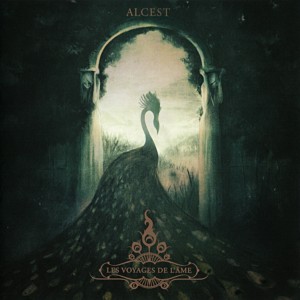 10. Alcest – Les Voyages De L’âme:
10. Alcest – Les Voyages De L’âme: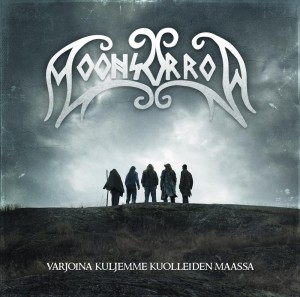 Moonsorrow – Varjoina Kuljemme Kuolleiden Maassa:
Moonsorrow – Varjoina Kuljemme Kuolleiden Maassa: Primordial – Redemption at the Puritan’s Hand:
Primordial – Redemption at the Puritan’s Hand: Hammers of Misfortune – 17th Street:
Hammers of Misfortune – 17th Street: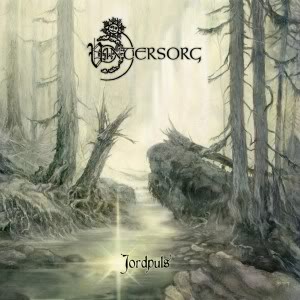 Vintersorg – Jordpuls:
Vintersorg – Jordpuls: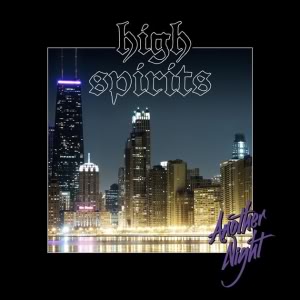 High Spirits – Another Night:
High Spirits – Another Night: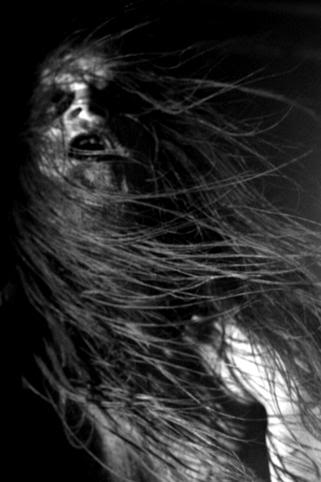 It should be all too clear by now that Gotrich and Stosuy do not like traditional or power metal at all. To such a degree that they will willingly ignore popular, widely lauded albums that fall into those styles. To each his own right? Yes. But here’s my problem: these are two very influential writers. Their opinions as mentioned before are parroted around the web, and frankly, that’s where a lot of this type of discussion takes place. What concerns me is that these lists are being trotted out for readers and listeners not already familiar with metal in general. What Gotrich and Stosuy present to these types of audiences is a mere sliver of the many styles of metal that are actually available out there. An NPR listener might actually be capable of being interested in metal that is delivered with a clean, melodic vocalist, or be able to enjoy a record that isn’t washed out in synths and shoegaze influences (cheap shot I know). There are plenty of bands who put out quality releases that this hypothetical person could enjoy, but they might never know about them.
It should be all too clear by now that Gotrich and Stosuy do not like traditional or power metal at all. To such a degree that they will willingly ignore popular, widely lauded albums that fall into those styles. To each his own right? Yes. But here’s my problem: these are two very influential writers. Their opinions as mentioned before are parroted around the web, and frankly, that’s where a lot of this type of discussion takes place. What concerns me is that these lists are being trotted out for readers and listeners not already familiar with metal in general. What Gotrich and Stosuy present to these types of audiences is a mere sliver of the many styles of metal that are actually available out there. An NPR listener might actually be capable of being interested in metal that is delivered with a clean, melodic vocalist, or be able to enjoy a record that isn’t washed out in synths and shoegaze influences (cheap shot I know). There are plenty of bands who put out quality releases that this hypothetical person could enjoy, but they might never know about them.
 2. Nightwish – Imaginaerum:
2. Nightwish – Imaginaerum: 3. Taake – Noregs Vaapen:
3. Taake – Noregs Vaapen: 4. Falconer – Armod:
4. Falconer – Armod: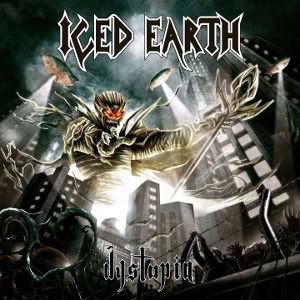 5. Iced Earth – Dystopia:
5. Iced Earth – Dystopia: 6. Edguy – The Age of the Joker:
6. Edguy – The Age of the Joker: 7. Týr – The Lay Of Thrym:
7. Týr – The Lay Of Thrym: 8. Burzum – Fallen:
8. Burzum – Fallen: 9. Absu – Abzu:
9. Absu – Abzu: 10. Ghost Brigade – Until Fear No Longer Defines Us:
10. Ghost Brigade – Until Fear No Longer Defines Us: